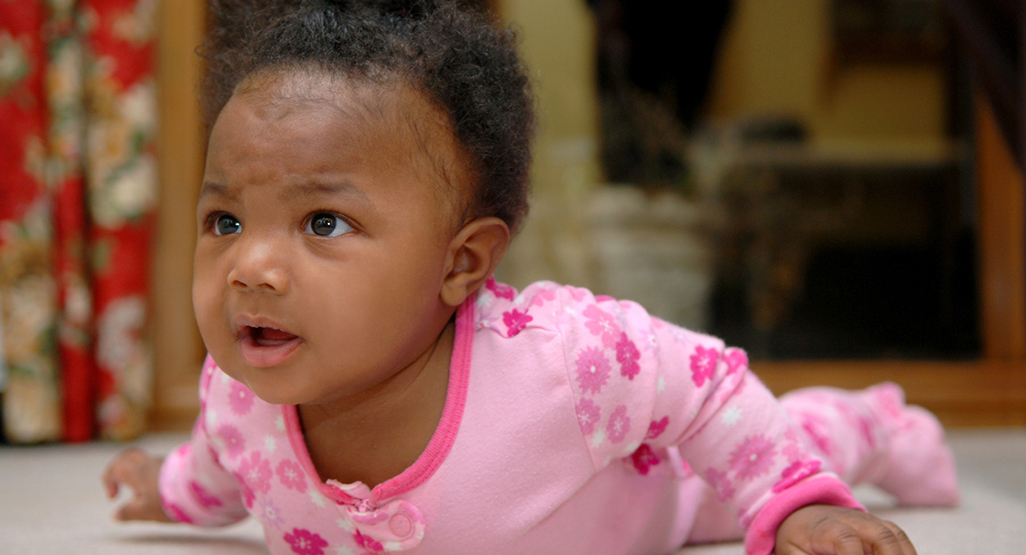Developmental milestones: Head control


Head control
Babies are born with very little ability to control their head and neck muscles. They develop this crucial skill, which is the foundation for all later movement such as sitting up and walking, in increments during the first six months of life.
When it develops
Most babies develop neck muscles strong enough to hold their head up by the age of six months.
How it develops
Newborns
Your baby's neck muscles are fairly weak at birth, so she'll rely on you to support her head and neck for at least the first month or so. Perhaps it's nature's way of ensuring you lots of face-to-face interaction. As you cradle her in your arms, enjoy the chance to gaze into her eyes -- it'll help you bond and make her feel loved.
One to two months
By the end of her first month, she should be able to lift her head briefly and turn it from side to side when lying on her stomach. At around six to eight weeks, if she's especially strong, she'll raise her head while lying on her back. When you carry her on your shoulder, she'll have enough control to hold her head up shakily, but not for long. She'll also be strong enough to hold up her head in a car seat, infant carrier, or babysling, but she's still too wobbly for an off the road buggy or a backpack. Wait to use these until she can hold her head up steadily without any support from you. Right now, you can probably put her in her bouncy seat and she will watch the world go by.
Three to four months
You'll notice a definite improvement in head control by this time. She's able to raise her head 45 degrees while lying on her stomach and keep it up steadily. For a fun game that also develops her neck muscles, place your baby on her back and slowly pull her up by her hands to a sitting position. Slowly ease her back down, and repeat. At this age she should be able to hold her head in line with the rest of her body as it's pulled up. Your child may be ready for an off-the-road buggy at four months, but stick to the pavement for now.
By six months, she'll be able to hold her head steady and erect, and she'll flex it forward when she's pulled into a sitting position.
What's next
Once your baby establishes good head control, she can move on to sitting up, rolling over, and crawling. Head control is also necessary for swallowing solid foods and sitting in a highchair.
Your role
You don't have to do much to encourage the development of head control, but you do have to be careful. For the first few months, especially, you'll need to cradle your baby's neck and head in the palm of your hand when you take her out of the cot or carry her from room to room. Once in a while, put her on her stomach. Lifting her head and chest to see you or her toys will strengthen her neck muscles.
When to be concerned
If your baby seems to struggle to lift her head up even slightly at three months, mention it the next time you see your doctor.Babies develop skills differently, some more quickly than others, and head control is no exception. Premature babies may reach this and other milestones later than their peers -- check with your doctor if you're worried.
Was this article helpful?
Yes
No

